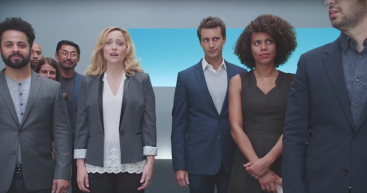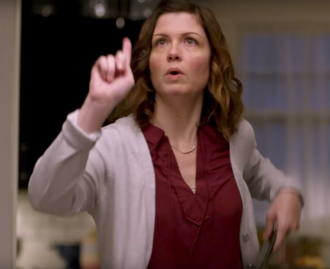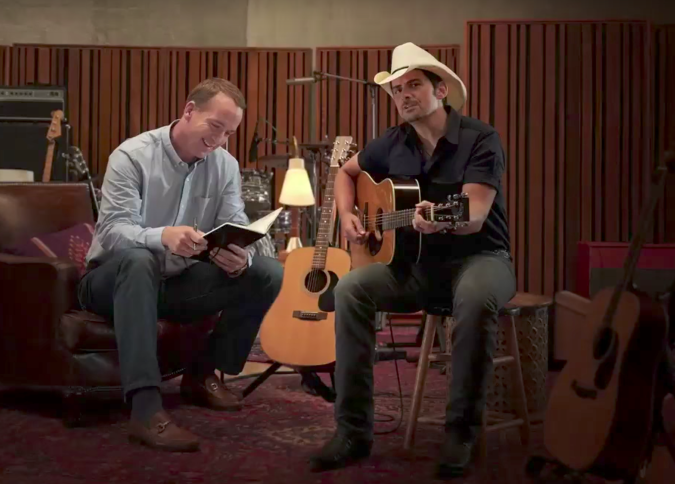Authenticity.
Right now, authenticity is one of the buzziest buzzwords in the business world. It’s generally taken to mean some nearly ineffable combination of transparency, realness, genuineness, legitimacy and honesty. Some people believe that a lack of authenticity did fatal damage to a recent presidential candidate’s shot at the White House (do not send me emails about this). And it’s a quality that the consumers most marketers consider most valuable – those born roughly between 1976 and 1996 – absolutely require in the brands they engage with.
Of course, I’m talking about millennials, those undeniably savvy consumers who’ve grown up with instant access to troves of online information about brands and products and with perfect awareness of themselves as a target market. They know marketers are always trying to sell things to them and they know that most of those things are not going to fundamentally change their lives or make the world a better place, so let’s not pretend that they are.
See, at the same time Millennial consumers crave authenticity, they categorically reject marketing messages that are deemed “too earnest”, perceiving that as a sign of either cluelessness or cynical duplicity (this is one place that Pepsi’s ill-conceived Kendall Jenner commercial went off the rails, but only one place, and enough has been said about that already).
So where does that leave a marketer who needs to demonstrate the authenticity, the legitimate realness of his or her brand without getting too earnest or serious about it? How, for example, do you create something as patently synthetic and deliberately mercantile as a TV commercial that doesn’t set off Millennials’ hyper-sensitive bullshit alarms?
This Looks Like A Job For Metamessaging
One way to do it is with a technique that I’m calling metamessaging. Forgive me for piling onto the “meta” bandwagon but in this case the term is apt. The prefix “meta” comes down to us from Greek through Latin and connotes beyond, above or transcending whatever term follows it. In literature, meta usually refers to something that refers back on itself or, more specifically, something that pokes fun at the conventions of a genre.
So, in advertising, metamessaging refers to ads that poke fun at the conventions of advertising as a way of demonstrating that we’re all on the same side of the table, here.
Since everything is artificial, let’s make the artifice apparent.
There’s a trend afoot in television commercials with the underlying message, “Look, you know we’re trying to sell something. We know you know that we’re trying to sell something and, finally, you know we know you know we’re trying to sell something. So let’s drop all pretense. We won’t even attempt to surreptitiously establish an emotional connection between our brand and you, the viewer. We’ll discard all those traditional, rhetorical tools like pathos, ethos, empathy, story arc, character, setting and all of that stuff. After all, those techniques are innately untransparent and inauthentic.
“Instead, we’ll make a connection by admitting, in fact, demonstrating, that this is a commercial, and that we know you know it’s a commercial. See, we’re not stuffy, old conventional marketers. No! We’re all in on the gag together. Now, don’t you love us?”
It’s the advertising equivalent of actors “breaking the fourth wall”, stepping out of their hermetic onscreen or onstage environment to address the audience directly (Think of Frank Underwood’s asides and soliloquies in House of Cards and do not send me emails about Kevin Spacey).
Here are four commercials that illustrate the trend. They each use metamessaging in slightly different ways, but they each proclaim loudly and proudly, This Is A Television Commercial And We’d Be Sincerely Grateful If You’d Consider Buying Our Stuff. They’re all running currently, as I’m writing this.
AT&T “More”

The spokesman who’s standing too close to the camera thinks he’s standing too close to the camera.
Demographically diverse, attractive and sharply dressed spokespeople slowly fill the shot, one by one, each making a different sales point about the “moreness” of AT&T’s offering. They address the camera until, around 00:15, one guy drops the Transparency Bomb by blatantly referring to himself and his onscreen colleagues as spokespeople and promising you even more spokespeople to come.
The denouement comes from the last spokesperson who’s so close to the camera that he’s not even fully visible. “I think I’m too close,” he says, acknowledging the presence of the camera and the fact that he’s mostly out of frame. We are truly though the advertising looking-glass.
Sprite “Vince Staples/Random Teenagers”
You know this is a Sprite commercial. And we know you know it’s a Sprite commercial. So let’s just have a big sign that says Sprite Commercial.
This commercial, featuring rapper Vince Staples, comes out of the gate presenting its advertisement bona fides. In fact, you need a scorecard to check off its numerous meta references.
(1) The setting actually displays the words The Sprite Commercial on a giant sign.
(2) This is clearly directed at the 12 to 18-year-old demographic who drinks fructose-sweetened carbonated soft drinks, but just to make that abundantly clear, Vince greets another actor with, “Hello, random teenager.”
(3) As an actor begins his oh-so-familiar “guzzle shot”, to the accompaniment of some corny music, a huge wave of liquid washes over him, representing instant refreshment. But wait. This clichéd sequence is interrupted by Vince, setting up the closing product shot.
(4) “Make sure they see that logo”, Vince says. “Right there, into the camera.”
(5) Finally, Vince announces. “OK, the commercial’s over” as the scene cuts abruptly to blackness.
There’s no hidden agenda here, consumers. Not one bit. This is a Sprite commercial that’s all about Sprite commercials. Get it?
Xfinity xFi Wi-Fi “Dinnertime”

Hang on a second, voice guy. See, we all know that we’re living in an Xfinity commercial so there’s nothing odd about speaking to an off-camera man.
This commercial for cable provider Xfinity’s xFi Wi-Fi service starts out looking pretty conventional. We see warmly convivial families gathered around dinner tables through the ages as a voiceover describes dinnertime as a time for family connections. Around 00:15, we arrive in the current day and see a family at a dining table, “connecting” via digital devices and ignoring one another completely.
At this point, mom looks off camera and asks the disembodied announcer to stop talking, “One second, voice guy.” The announcer hears mom and obeys her request (very meta) and she uses her own smartphone to pause the family’s Wi-Fi signal, forcing the family to talk to one another in person.
In my unsolicited opinion, this is an excellent commercial. Metamessages aside, it presents a relevant, human benefit based on a unique product feature in an entertaining and engaging way. It’s also the only ad I can think of that pitches the ability to turn off the advertised product as an exciting and unique attribute.
Nationwide Insurance, “Peyton Manning/Brad Paisley/The Jingle Sessions”

Brad Paisley sings “What did I just get into”, to the tune of “Nationwide is on your side”. It’s meta piled upon meta.
I’ve saved the most meta for last. It’s not just a commercial that acknowledges it’s a commercial for a brand. It’s a commercial about the jingle for a brand. The “Nationwide Is On Your Side” jingle was introduced 48 years ago and it’s so ingrained in the American psyche that Nationwide and their ad agency, Ogilvy & Mather, believe all that’s required to drive home their brand’s message is to reference that famous, seven-note phrase.
In this ad, former quarterback Peyton Manning (who’s been in so many different commercials that he’s practically a metamessage unto himself) gives singer Brad Paisley helpful input on how to render the jingle, “in your heart”. There’s never a mention of anything about Nationwide, no attempt to differentiate the brand from dozens of competitors. It’s just a single, musical phrase, repeated over and over and over and wrapped in some amusing bro-banter.
Does Metamessaging Work? Insight From A Sample Of One, Certified Millennial
As I was writing this, I had the opportunity to bounce the premise off a millennial friend (who’s not in the advertising or marketing business). The only one of these commercials she remembered seeing (they’re all running currently, as of mid-November, 2017) was the AT&T spot described at the beginning of this article. She’d only seen that one because it had run in the New England Patriots versus Atlanta Falcons football game the previous Sunday. And she only saw that because football games are the only conventional television programming she and her friends watch with any regularity.
She did have an opinion on the AT&T commercial. She liked it a lot. She described it as “Brash and nervy” because, “It pokes fun at the same thing I’d poke fun at. It’s preemptive fun poking. We’re all sharing the joke. It’s sassy.”
My friend gets it because AT&T gets it. The commercial worked for her precisely because it acknowledged, without the slightest trace of earnestness, that it was selling cellular service and pounding out more and more features with more and more self-acknowledged spokespeople.
But did it work as a persuasive message? Probably not exactly the way AT&T would hope. Here’s the rest of my friend’s review:
“Commercials may help with initial introductions, to see what’s out there in a broad sense (like browsing through a dating site and throwing out the dogs). But I always need some real, unscripted voices behind the things I buy. If I was looking for new cell service, I’d look at Reddit or other sites for reviews. Maybe ask some friends what sucks about their carriers. But even a cool commercial wouldn’t sell me. This specific commercial just didn’t annoy the crap out of me.”
So, metamessaging is one way to “not annoy the crap out of” our audience. I hope that isn’t the best that advertisers can hope for in the long-term. But it may have to do for now.
Linkography
- Pepsi’s ill-fated Kendall Jenner commercial, for the eleven people on the planet who haven’t seen it enough already. – From Wired magazine
- AT&T “More Spokespeople” Commercial
- Sprite “Vince Staples/ Random Teenager” Commercial
- Xfinity xFi “Dinnertime” Commercial
- Nationwide Insurance “Peyton/Brad/Jingle Sessions” Commercial
- Jaclyn Tyler Poeschl’s (my genuine, millennial friend) photography and cinematography website
